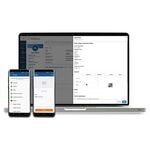
ELDs, ELogs and Fleet Technology
The electronic logging device (ELD) mandate – requires most regional and long-haul drivers of commercial motor vehicles to use ELDs (also known as ELogs) to record their hours of service.
The ELD mandate went into effect for interstate drivers on December 17, 2019.
In the time since many states changed their hours-of-service regulations to adopt the ELD mandate for in-state drivers as well. FMCSA and state investigators are using ELog data to conduct audits both onsite and at roadside inspections.
On March 7, 2022, the Canadian Council of Motor Transport Administrators (CCMTA) released a message for industry confirming that all jurisdictions support a period of progressive enforcement without penalties until January 1, 2023, including elevated education and awareness for motor carriers and drivers.







